Stephen Hong Sohn's Blog, page 11
June 29, 2023
A Review of Victoria Ying’s Hungry Ghost (First Second, 2023)
![[personal profile]](https://i.gr-assets.com/images/S/compressed.photo.goodreads.com/hostedimages/1491408111i/22407843.png) uttararangarajan
uttararangarajan

Written by Stephen Hong Sohn
Edited by Uttara Rangarajan
I was a big fan of Victoria Ying’s previous graphic narrative series, so when Hungry Ghost came out, I knew I had to review it! This one diverges from the speculative conceits of the first in its shift to a particularly thorny topic related to disordered eating. Let’s let the official marketing description give us more context: “Valerie Chu is quiet, studious, and above all, thin. No one, not even her best friend, Jordan, knows that she has been bingeing and purging for years. But when tragedy strikes, Val finds herself reassessing her priorities, her choices, and her body. The path to happiness may lead her away from her hometown and her mother’s toxic projections—but first she will have to find the strength to seek help. This beautiful and heart-wrenching young adult graphic novel takes a look at eating disorders, family dynamics, and ultimately, a journey to self-love.”
So, I’m going to have to provide a spoiler warning here, because the tragedy is partly what sets off this story toward its resolution. Valerie’s father ends up dying in a plane crash. From what I recall, he is a big adventurer and likes to travel. On one of his solo trips, he tragically dies. The family must come together in the midst of his death, but problems arise precisely because of Valerie’s coping mechanism. Complicating circumstances is Valerie’s friendship with Jordan. Though the two originally seem to be on very good terms, their friendship is tested once it becomes apparent that the two have feelings for the same individual. The graphic narrative eventually resolves this impasse in a realistic, poignant way. I also have to applaud Ying’s lovely visual style, which will be engaging to any reader. I so much appreciate Ying’s tackling of such a difficult and complicated topic, and I know this kind of work will have broad appeal given its socially conscious message and robust artwork.
Buy the Book
Here comments
comments
A Review of Victor Manibo’s The Sleepless (Erewhon, 2022)
![[personal profile]](https://i.gr-assets.com/images/S/compressed.photo.goodreads.com/hostedimages/1491408111i/22407843.png) uttararangarajan
uttararangarajan
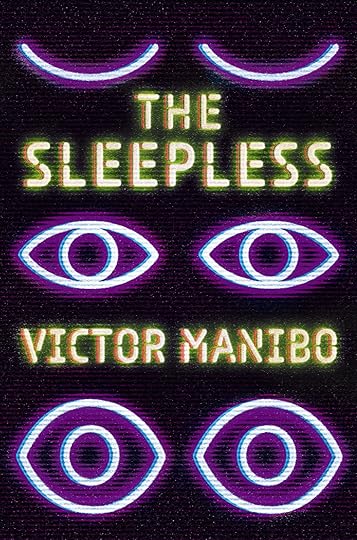
Written by Stephen Hong Sohn
Edited by Uttara Rangarajan
So, this title I was so excited about, I took it with me on a long plane flight, and Victor Manibo’s The Sleepless (Erewhon, 2022) did not disappoint. Any science fictional future which involves a strange disease and a noir plot is going to be the mash-up that will make the minutes fly by. Let’s let the official webpage marketing description do some work for us: “A mysterious pandemic causes a quarter of the world to permanently lose the ability to sleep—without any apparent health implications. The outbreak creates a new class of people who are both feared and ostracized, most of whom optimize their extra hours to earn more money. Jamie Vega, a journalist at C+P Media, is one of the Sleepless. When his boss dies in a suicidal overdose, Jamie doesn’t buy this too-convenient explanation—especially given its suspicious timing during a controversial merger—and investigates. But everything goes awry when Jamie discovers that he was the last person who saw Simon alive, and realizes that he has no memory of that night. Not only do the police suspect him, Jamie can’t account for the lost time, and the memory loss may have to do with how he became Sleepless: not naturally, but by biohacking his body through a risky and illegal process. As Jamie delves deeper into Simon’s final days, he tangles with extremist organizations and powerful corporate interests, and must confront past traumas and the unforeseen consequences of biohacking himself. But he soon faces the most dangerous decision of all, as he uncovers a terrifying truth about Sleeplessness that imperils him—and all of humanity.”
I’m not going to belabor this review with a full plot summary, but suffice it to say, I was very satisfied with how Manibo ends up delivering some of the information that is crucial not only to develop fully realized characters, but to tie up various narrative strands. I was especially impressed by the way that Manibo deals with the scientific aspect of sleep, which really made the novel robust. Of course, as with any mystery, there are a lot of twists and turns, and Manibo leaves us with a satisfying conclusion as well. A definite standout read for 2022 and certainly a work I’d recommend for any Asian American literature fans, who enjoy that combination of mystery and science fiction!
For more on the book and for purchase links, go Here
 comments
comments
A Review of Tom Lin’s The Thousand Crimes of Ming Tsu (Little, Brown and Company, 2021)
![[personal profile]](https://i.gr-assets.com/images/S/compressed.photo.goodreads.com/hostedimages/1491408111i/22407843.png) uttararangarajan
uttararangarajan
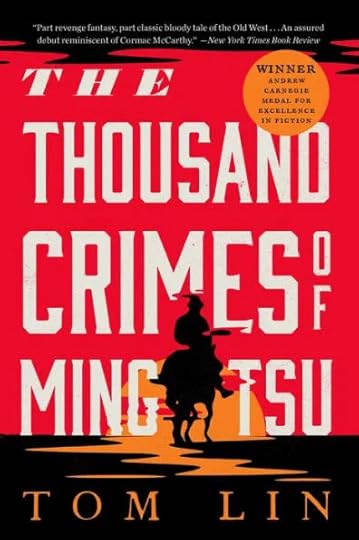
Written by Stephen Hong Sohn
Edited by Uttara Rangarajan
Wow, Tom Lin’s The Thousand Crimes of Ming Tsu (Little, Brown and Company, 2021) was the surprise read for me this year. On yet another flight, I brought this one along, thinking it would be a traditional Western, with an Asian American twist. There is something definitely going on with the neo-Asian Americanist Western and Lin has tapped into it in what I would call a mashup of Cormac McCarthy’s dark Westerners and Katherine Dunn’s Geek Love. In any case, let’s let the marketing description give us some context: “Orphaned young, Ming Tsu, the son of Chinese immigrants, is raised by the notorious leader of a California crime syndicate, who trains him to be his deadly enforcer. But when Ming falls in love with Ada, the daughter of a powerful railroad magnate, and the two elope, he seizes the opportunity to escape to a different life. Soon after, in a violent raid, the tycoon's henchmen kidnap Ada and conscript Ming into service for the Central Pacific Railroad. Battered, heartbroken, and yet defiant, Ming partners with a blind clairvoyant known only as the prophet. Together the two set out to rescue his wife and to exact revenge on the men who destroyed Ming, aided by a troupe of magic-show performers, some with supernatural powers, whom they meet on the journey. Ming blazes his way across the West, settling old scores with a single-minded devotion that culminates in an explosive and unexpected finale. Written with the violent ardor of Cormac McCarthy and the otherworldly inventiveness of Ted Chiang, The Thousand Crimes of Ming Tsu is at once a thriller, a romance, and a story of one man's quest for redemption in the face of a distinctly American brutality.”
The reference to Ted Chiang is spot on, only insofar as I didn’t realize that this novel would have such a strong speculative turn. At first, there is a little bit of that Asian mysticism in the figure of the prophet who can foretell things without fail, but as the revenge plot gets into high gear, Ming Tsu finds himself working for hire as part of a troupe. I’m really glad I didn’t read any paratextual material prior to starting because I only knew that there was going to be some sort of crime element to the plot based upon the cover and the title. So, while I was on the plane, I kept thinking: wow, this has taken such a weird, cool turn, and reminds me of some of the recent writings coming up that we’ve seen like C. Pam Zhang’s phenomenal work, How Much of These Hills is Gold. The ending, in particular, was surprising to me, but it made so much logical sense. I can definitely see this book getting some critical attention in the future and very much look forward to what else Tom Lin has in store for us. Intriguingly, I think Lin is in the PhD program in English at UC Davis, so I’m guessing we will have much more to read on the academic end as well!
Buy the Book Here
 comments
comments
A Review of Simon Jimenez’s The Spear Cuts through Water (Del Rey, 2022)
![[personal profile]](https://i.gr-assets.com/images/S/compressed.photo.goodreads.com/hostedimages/1491408111i/22407843.png) uttararangarajan
uttararangarajan
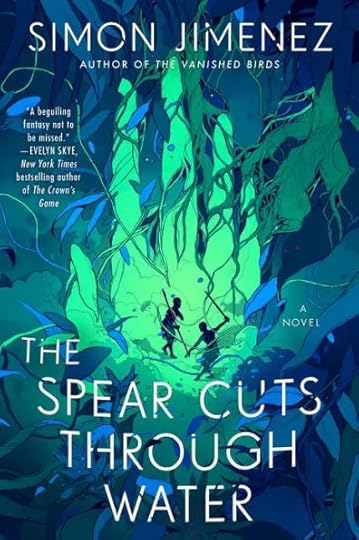
Written by Stephen Hong Sohn
Edited by Uttara Rangarajan
So, first off: I am the biggest fan of Simon Jimenez’s The Vanished Birds, so much so, I was a little bit scared to pick up his second publication. Would it be just as good? Well, we can put that question to rest because Jimenez has produced a startlingly immersive. sophomore novel called The Spear Cuts through Water (Del Rey, 2022). I call it “startling,” because it’s so different from the first novel in terms of form and content. Let’s let the official marketing description do some work for us: “The people suffer under the centuries-long rule of the Moon Throne. The royal family—the despotic emperor and his monstrous sons, the Three Terrors—hold the countryside in their choking grip. They bleed the land and oppress the citizens with the frightful powers they inherited from the god locked under their palace. But that god cannot be contained forever. With the aid of Jun, a guard broken by his guilt-stricken past, and Keema, an outcast fighting for his future, the god escapes from her royal captivity and flees from her own children, the triplet Terrors who would drag her back to her unholy prison. And so it is that she embarks with her young companions on a five-day pilgrimage in search of freedom—and a way to end the Moon Throne forever. The journey ahead will be more dangerous than any of them could have imagined.”
This novel’s longer than most, so the plot description here can only do so much. It does a reasonably good job, but what it cannot describe is the discursive mode. This novel has one of the most unique storytelling approaches I’ve ever read. There is a form of second person address that I haven’t seen used in the way Jimenez does. Somehow it toggles between second and third person in a way that is sometimes brokered by tactical line breaks and the use of italics. The second person narrative conceit becomes increasingly intertwined with what can best be described as the main diegetic story level, the one that is essentially a quest plot. It will take about four hundred pages for the second person “frame” to become fully enmeshed with the diegetic level. We know, as readers, that there is a kind of theater taking place in which the audience, who includes the “you” protagonist, is watching the events unfold. These events involve Jun, Keema, and the god, who are on their way to vanquish the Three Terrors. But, the “you” protagonist, if I’m understanding correctly (and please feel free to turn away here because it could be a minor spoiler), is related to the characters in the novel, as the “you” seems to be a distant descendant. At one point, Jun and Keema even move into the space of the theater and briefly interact with the “you” and then return back into the diegetic fictional plane, where the novel bears out the plot.
I think what makes this book so extraordinary is this form of narration, which not only involves this “you” protagonist but necessarily and always implicates its implied readers, precisely because the “you” can be conflated with the reading subject, who is continually and also being hailed. As we “become” part of the story as well, we gain more and more investments, even if the story itself seems so different from our reality. After all, there are talking tortoises and god-like powers that are manifested once characters literally eat parts of the divinely-imbued subjects. Nevertheless, at its core, this story is one about our inheritances and our mythologies and how we derive power and stability from knowing more about our past. In this respect, I do think Jimenez has written a masterful allegory about immigration and the need to acknowledge our forebears and to know our histories, however complicated and speculative they may seem. A truly original and enthralling work of fantasy.
Buy the Book Here
 comments
comments
A Review of R.F. Kuang’s Yellowface (William Morrow, 2023)
![[personal profile]](https://i.gr-assets.com/images/S/compressed.photo.goodreads.com/hostedimages/1491408111i/22407843.png) uttararangarajan
uttararangarajan
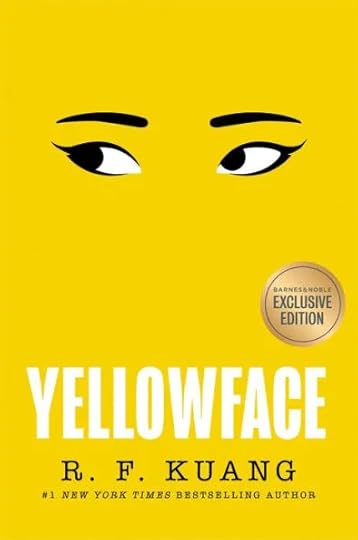
Written by Stephen Hong Sohn
Edited by Uttara Rangarajan
Ah, I knew when I saw the title of R.F Kuang’s latest novel I would have to read it. In Yellowface (William Morrow, 2023), Kuang explores the always thorny trope of writing from a cross-racial perspective. Let’s let the official marketing description give us some key background information: “Authors June Hayward and Athena Liu were supposed to be twin rising stars: same year at Yale, same debut year in publishing. But Athena’s a cross-genre literary darling, and June didn’t even get a paperback release. Nobody wants stories about basic white girls, June thinks. So when June witnesses Athena’s death in a freak accident, she acts on impulse: she steals Athena’s just-finished masterpiece, an experimental novel about the unsung contributions of Chinese laborers to the British and French war efforts during World War I. So what if June edits Athena’s novel and sends it to her agent as her own work? So what if she lets her new publisher rebrand her as Juniper Song—complete with an ambiguously ethnic author photo? Doesn’t this piece of history deserve to be told, whoever the teller? That’s what June claims, and the New York Times bestseller list seems to agree. But June can’t get away from Athena’s shadow, and emerging evidence threatens to bring June’s (stolen) success down around her. As June races to protect her secret, she discovers exactly how far she will go to keep what she thinks she deserves. With its totally immersive first-person voice, Yellowface takes on questions of diversity, racism, and cultural appropriation not only in the publishing industry but the persistent erasure of Asian-American voices and history by Western white society. R. F. Kuang’s novel is timely, razor-sharp, and eminently readable.” This work reads more like a novel of ideas related to our very complicated engagement now with identity politics and the reformation of the Western and the American canon. On the one hand, Kuang’s novel poses the issue that no single topic can be owned by a given group to represent. On the other, this particular main character is quite a complicated figure who tries to rationalize her decisions at every turn, and she is very hard to empathize with. For me, the biggest concern with this main character is her selective engagement and understanding of history. To be sure, she is aware of the importance of certain aspects of historical accuracy to the depictions that are being published. At the same time, June never fully engages with the longer history brought up in the very title. That is, as someone who is not of Asian descent, she seems frightfully unaware that the Asian cultures have so often been represented by non-Asians, whether in the realm of writing or otherwise. Kuang’s biggest critique of June seems to exist at this point, which is that June’s navel-gazing only goes so far. This novel is sure to bring up a lot of conversation and would be a perfect pairing with Elaine Hsieh Chou’s Disorientation. A dark satire to be sure and a solid effort from Kuang; it is a narrative which clearly reveals Kuang’s range and capacity as a writer (as she moves from the speculative terrains of her first four publications).
Buy the book Here
 comments
comments
A Review of Peng Shepherd’s The Cartographers (William Morrow, 2022)
![[personal profile]](https://i.gr-assets.com/images/S/compressed.photo.goodreads.com/hostedimages/1491408111i/22407843.png) uttararangarajan
uttararangarajan
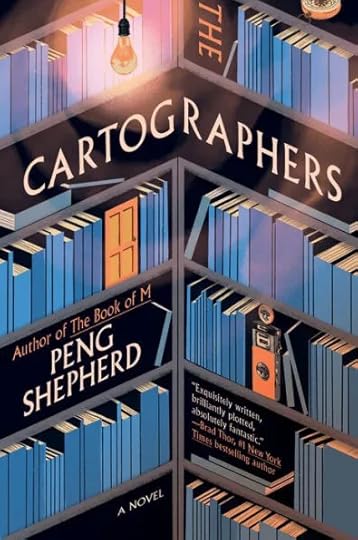
Written by Stephen Hong Sohn
Edited by Uttara Rangarajan
Peng Shepherd’s The Cartographers (William Morrow, 2022) was the surprise read for me in 2023. I shouldn’t have been so caught off guard. After all, I loved her debut, The Book of M, which was a pandemic narrative that has gotten way less attention that Ling Ma’s Severance even though they came out at the same time and, for me, really presaged some things related to the upcoming COVID pandemic. In any case, let’s let the marketing description do some work for us: “From the critically acclaimed author of The Book of M, a highly imaginative thriller about a young woman who discovers that a strange map in her deceased father’s belongings holds an incredible, deadly secret—one that will lead her on an extraordinary adventure and to the truth about her family’s dark history. What is the purpose of a map? Nell Young’s whole life and greatest passion is cartography. Her father, Dr. Daniel Young, is a legend in the field and Nell’s personal hero. But she hasn’t seen or spoken to him ever since he cruelly fired her and destroyed her reputation after an argument over an old, cheap gas station highway map. But when Dr. Young is found dead in his office at the New York Public Library, with the very same seemingly worthless map hidden in his desk, Nell can’t resist investigating. To her surprise, she soon discovers that the map is incredibly valuable and exceedingly rare. In fact, she may now have the only copy left in existence...because a mysterious collector has been hunting down and destroying every last one—along with anyone who gets in the way. But why? To answer that question, Nell embarks on a dangerous journey to reveal a dark family secret and discovers the true power that lies in maps...” Um, this description barely scratches the surface.
While the main narrative viewpoint primarily follows Nell, it will move around to other characters once Nell realizes that she’s onto something big. The cartographers, as the title indicates, are a select group of folx who came together during graduate school and who eventually stumble upon something called a “phantom settlement.” I’ll let you look away in case you don’t want to be spoiled. I didn’t know anything about phantom settlements, but these are locations on maps (typically towns) that don’t actually exist. They are put there either inadvertently or possibly directly in the case of copyright issues. As the novel details, phantom settlements became useful for securing one’s copyright in an age of mass reproduction. You could find out if someone was copying your map if they reproduced a town that didn’t actually exist and that you put there in case someone was trying to copy what you had created. In the case of Shepherd’s novel, we eventually find out, there are some magical versions of maps. In one map, a town called Agloe is a phantom settlement, but if you have this specific map, you can actually travel to Agloe. Realizing what a monumental finding such maps are, the group needs to figure out what to do with their discovery plan, but one member of the cartographers posse begins to hatch an alternative plan for these maps. The story is wrapped up ultimately in a romance triangle, and as all is eventually revealed, we begin to see why this particular character was driven to so many acts of destruction. In some way, his motives are far less interesting than the speculative conceit that Shepherd provides us with, so I kept thinking about a potential not-so-direct sequel that would consider more magical maps and phantom settlements. Whatever the case, Shepherd’s novel here is totally mesmerizing: perfect for a summer day at the beach or to take with you on a plane ride! Thank me later!
Buy the Book Here
 comments
comments
A Review of Michelle Zauner’s Crying in H Mart (Knopf, 2021)
![[personal profile]](https://i.gr-assets.com/images/S/compressed.photo.goodreads.com/hostedimages/1491408111i/22407843.png) uttararangarajan
uttararangarajan
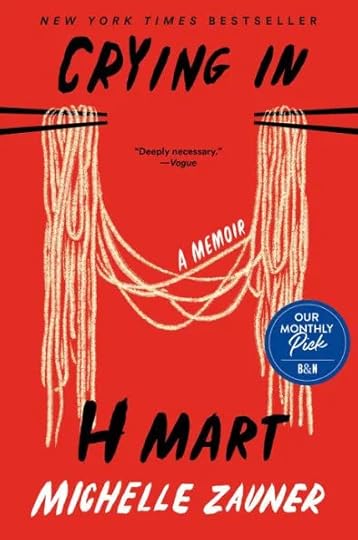
Written by Stephen Hong Sohn
Edited by Uttara Rangarajan
I am late to the game reviewing Michelle Zauner’s Crying in H Mart (Knopf, 2021). By now, this book has become a bestseller, and Zauner herself would have already been nominated for multiple Grammys for her work as the lead singer for Japanese Breakfast. I had heard so many people reading this memoir, which made me, I think, pause for longer. I finally picked this one up, and boy, it does pack a wallop. The question for me is: what makes a book like this one a bestseller given its serious topic matter? What are readers gravitated to when they read the issues that Zauner brings up? Let’s let the official marketing description do some work for us: “In this exquisite story of family, food, grief, and endurance, Michelle Zauner proves herself far more than a dazzling singer, songwriter, and guitarist. With humor and heart, she tells of growing up one of the few Asian American kids at her school in Eugene, Oregon; of struggling with her mother's particular, high expectations of her; of a painful adolescence; of treasured months spent in her grandmother's tiny apartment in Seoul, where she and her mother would bond, late at night, over heaping plates of food. As she grew up, moving to the East Coast for college, finding work in the restaurant industry, and performing gigs with her fledgling band—and meeting the man who would become her husband—her Koreanness began to feel ever more distant, even as she found the life she wanted to live. It was her mother's diagnosis of terminal cancer, when Michelle was twenty-five, that forced a reckoning with her identity and brought her to reclaim the gifts of taste, language, and history her mother had given her.”
The questions I posed remind me of that attraction readers sometimes have to illness memoirs, as they seek to sublimate some personal form of strife that finds some sort of resonance through whatever they are reading. In this way, I’d guess that many read this book as a way to deal with their own forms of loss and grief. Zauner’s work is perhaps one of the most appropriate venues for this form of interactive bereavement because she’s so willing to delve into the complications and the conflicted feelings that arise when someone you love is dying. But beyond the content, Zauner has exquisite prose, which is also why I believe this work has found such a broad audience. Perhaps, it’s because Zauner is an artist of all stripes: someone who can wield musical notes inasmuch as she can capture the precision of words. One of the main ways that she can imbue this memoir with poetic and stylistic coruscation emerges in her connection to food. It is one way that Zauner can confront the loss of her mother. At the same time, Zauner’s tender attention to the process by which food is made, the many ingredients necessary to complete a dish, and how the various things she makes are indeed a testament to a larger set of social relations, manifests a robust form of life writing that so many can connect with. It is a profound and beautifully wrought work, written from the vantage point of incredible devastation.
Buy the Book Here
 comments
comments
A Review of Julia Kagawa’s Iron Vow (Inkyard, 2023)
![[personal profile]](https://i.gr-assets.com/images/S/compressed.photo.goodreads.com/hostedimages/1491408111i/22407843.png) uttararangarajan
uttararangarajan
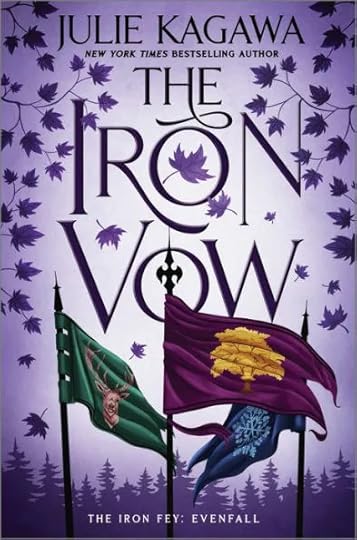
Written by Stephen Hong Sohn
Edited by Uttara Rangarajan
When I managed some time to take a breath, I knew I would be reading Julia Kagawa’s Iron Vow (Inkyard, 2023). It is billed as the finale to the Iron Fey series, but is it? I ask this question only because the series presumably ended after the original quartet, only to rebooted when the protagonist’s son Meghan Chase is born and creates a whole narrative concerning a terrible prophecy. Once that series ended, one thought: okay, it’s over, but then the Evenfall trilogy began. I will admit: this one feels way more final than the other “final” installments, so I’ll let the marketing description do the work: “The extraordinary finale to Julie Kagawa's New York Times and internationally bestselling Iron Fey series is here…and the fate of the Nevernever and all the world hangs in the balance. Join Meghan, Ash, Puck, Grimalkin, and the entire Iron Fey cast for this final epic journey into worlds where imagination knows no boundaries…After leaping through the portal to Evenfall, Meghan and her companions find themselves in a terrifying new world where Nightmares roam and glamour is nearly nonexistent. As their magic wanes and the creatures of Evenfall rise against them, the race to find the Nightmare King grows ever more desperate. But what they discover—about Evenfall, about the Nightmare King, about themselves—will shake everything they thought they knew to the core. The Nightmare King stirs. A world hangs in the balance. And as twilight descends upon all the realms of Faery, Meghan and her allies must make one more impossible choice.”
There are quite a lot of twists and turns in this one. I am issuing my spoiler warning here, so turn away before this sentence ends unless you want to know some of the more interesting plot reveals. At some point, you begin to realize that there is something really weird about this Evenfall and the Evenfey they are encountering. At Nyx, who readers discover is actually an Evenfey, who is beginning to recover her memories, encounters a mirror version of herself, who Kagawa calls Other Nyx. What is up with this Other Nyx? And then Nyx encounters someone she knew outside of Evenfall, who should technically be “dead,” or at least the term we use when a fey disappears from existence. In any case, as readers discover, the Nightmare King’s dreaming has retained the Evenfey, who otherwise would have disintegrated over time. As with all fey, their power and their presence is retained partially by those who remember them, including humans and other beings who encounter them. When Evenfall was sealed away, the only entity able to provide Evenfey with any sense of presence is the Nightmare King, who remembers them via his twisted dreams. This plot point explains why Evenfall is full of nightmare beings and these alternate fey beings, who have been generated by the Nightmare King. The question then becomes: how does Meghan and the gang preserve the lives of these fey, even if they are only partial remembrances, while also finding a way to keep the Nightmare King asleep, so that these fey can “stay alive”? Indeed, if the Nightmare King awakes, the logic is that the Evenfey and Evenfall itself would disappear because his dream would be over. These issues are the ones that the novel wrestles with, while the ultimate solution requires the fey groups to come together in a way they haven’t before. This conclusion is precisely why this installment feels like the actual ending to the series: there’s an incredible shift in the alliance systems that have heretofore created so much of the drama and the tension. Despite this kind of ending, I wouldn’t count on Kagawa reconsidering the ending of the Fey series. It is what Kagawa is still best known far, and I will bet that if she wants to reboot the series again, she will find a unique way to do it.
Buy the Book Here
 comments
comments
A Review of The Auntie Sewing Squad Guide to Mask Making, Radical Care, and Racial Justice
![[personal profile]](https://i.gr-assets.com/images/S/compressed.photo.goodreads.com/hostedimages/1491408111i/22407843.png) uttararangarajan
uttararangarajan

Written by Stephen Hong Sohn
Edited by Uttara Rangarajan
I was preparing for a talk at my home institution that concerned COVID, and I was reading up on all of the brilliant recent scholarship that has already been produced on the topic (despite the fact that lockdown really only happened just over three years ago), and I stumbled upon The Auntie Sewing Squad Guide to Mask Making, Radical Care, and Racial Justice edited by Mai-Linh K. Hong, Chrissy Yee Lau, and Preeti Sharma (University of California Press, 2021). What an extraordinary, multigenre work, the kind which I wish we’d see more of. On the one hand, this edited volume is certainly scholarly and rigorous in all of the ways that we’d expect of a university press publication. On the other, this work is undoubtedly practical, with one of the most intriguing elements being the interactive component, with the editors including patterns and directions for engaging in the construction of masks. We will all, of course, remember that very scary time when we were unable to find PPE not only for ourselves, but for people we knew who were engaging in essential work. Around this time, a number of groups formed around this resource scarcity issue, including mutual aid collectives like the Auntie Sewing Squad, who came together to create masks for essential workers and healthcare employees. In this sense, this work is so much about praxis: putting theory into practice by addressing social justice issues during the unfolding global pandemic. The volume not only delineates the history of such work, but also clarifies key terms connected to these mutual aid organizations, with sections devoted to labor and solidarity. Individual pieces range from the more traditional scholarly perspectives to more creatively engaged autobiographical writings. This variation in tone and style serves to expand the readership of this volume and makes it incredibly welcoming. I’ll stop there to note that I hope that this type of publication heralds the possibility of so many more, perhaps practical guides to general survival in academia or the ways in which we engage in activisms both inside and beyond the classroom. A stellar work, one that reminds us of our capacities to organize, to generate action that saves lives, and to emphasize our interdependence, despite the most dire of circumstances.
Buy the Book Here
 comments
comments
April 29, 2023
A Review of Truong Tran’s Book of the Other (Kaya, 2021)
![[personal profile]](https://i.gr-assets.com/images/S/compressed.photo.goodreads.com/hostedimages/1491408111i/22407843.png) uttararangarajan
uttararangarajan
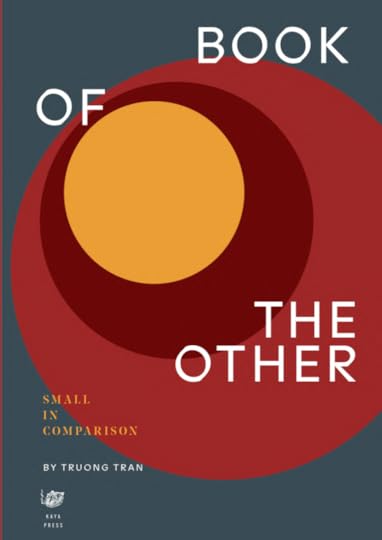
Written by Stephen Hong Sohn
Edited by Uttara Rangarajan
This one is going to be a lightning review of Truong Tran’s Book of the Other (Kaya, 2021). I read it quite a while back and merely wanted to take the time to discuss the shift and evolution of Tran’s poetry, especially since I covered some of Tran’s collections long ago. The marketing description over at Kaya provides us with this description: “A furious, multiform examination of the devastation wrought by anti-Asian racism in America Truong Tran’s provocative collection of poetry, prose and essays is a stunning rebuttal to the idea of anti-Asian racism as a victimless crime. Written with a compulsion for lucidity that transforms outrage into clarity, Book of the Other resists the luxury of metaphor to write about the experience of being shut out, shut down and othered as a queer, working-class teacher, immigrant and refugee. What emerges from Tran’s sharp-eyed experiments in language and form is an achingly beautiful acknowledgment of the estrangement from self forced upon those seduced by the promise of color-blind acceptance and the rigorous, step by step act of recollection needed to find one's way home to oneself.”
While Book of the Other retains Tran’s signature use of prose poetry blocks, what is decidedly different is the more squarely direct and confrontational tone his lyric speaker employs. Whereas prior poetry collections might have encrypted more of the content in metaphor and circularity, you absolutely understand that there is anger here that emerges from the center of an individual on the margins: an ethnoracial minority, a queer subject, someone on the outside of the academy. Perhaps, what is most reparative for me, given my own professional history, is how courageously Tran calls out institutional racism and institutional elitism, the kind that you somehow still see today, despite all of these proclamations that every higher-level university or college is diverse. A thrilling work of social critique, and in my opinion, Tran’s best work.
Buy the Book Here
 comments
comments



